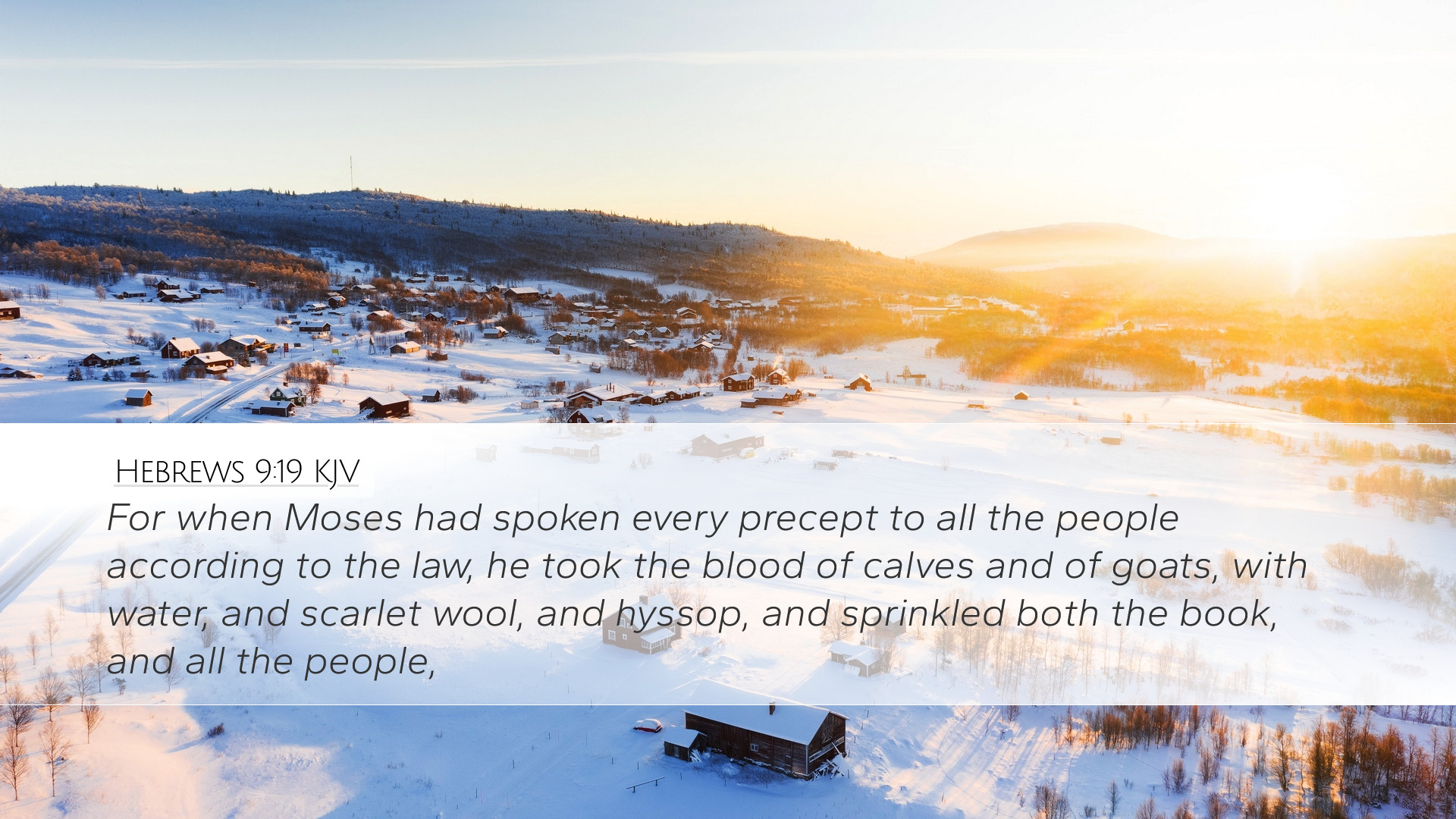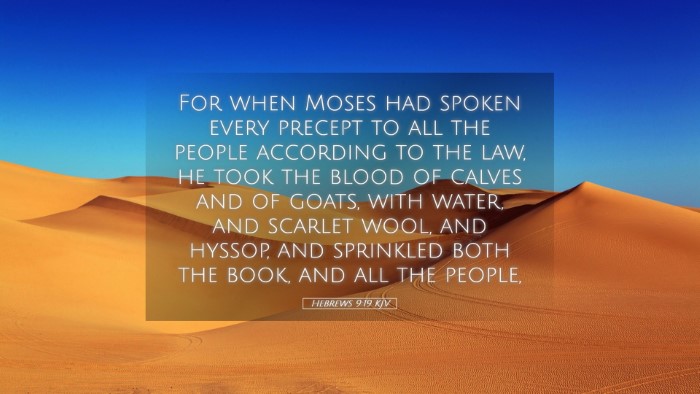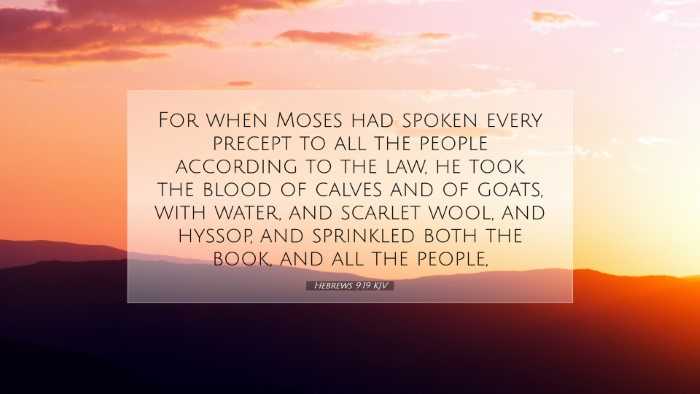Commentary on Hebrews 9:19
Hebrews 9:19 states: "For when Moses had spoken every precept to all the people according to the law, he took the blood of calves and of goats, with water, and scarlet wool, and hyssop, and sprinkled both the book, and all the people."
Introduction
This verse encapsulates a critical moment in the establishment of the Mosaic covenant and reveals significant theological implications about the nature of sacrifice, covenant, and redemption. Here, the author of Hebrews draws upon the Old Testament sacrificial system to illustrate a deeper spiritual reality pertaining to the New Covenant established by Christ.
The Process of Covenant Establishment
- The Role of Moses: Moses, as the mediator of the Old Covenant, is depicted with authority and dedication. His role underscores the seriousness with which God handles worship and covenant relations.
- The Use of Blood: The sprinkling of blood is central to this verse. Matthew Henry comments on the significance of blood in covenant-making, affirming that blood represents life and carries the weight of atonement. This act prefigures the ultimate sacrifice of Christ, linking the Old with the New Testament.
- Elements of Ritual: The details provided—calves and goats, water, scarlet wool, and hyssop—are not arbitrary. Albert Barnes highlights their specific roles within the ritual, symbolizing purification, sacrifice, and the seriousness of God’s holiness. Hyssop, for example, signifies cleansing and is directly associated with the Passover, while the scarlet wool brings to mind the blood used in divine protection.
The Nature of the Law and Worship
The mention of “every precept” signifies the comprehensive nature of the law that Moses communicated. Adam Clarke emphasizes that worship is not to be taken lightly; it comes with precepts that must be adhered to accurately. The entirety of the Law is seen as an integral part of humanity's relationship with God, requiring obedience and reverence.
Symbolism and Foreshadowing
This verse not only illuminates the practices of the Old Covenant but also carries prophetic significance towards Christ's atoning work. The sprinkling of blood on both the book and the people serves as a foreshadowing of the New Covenant, where the blood of Christ would establish a more perfect and eternal covenant.
- Blood as Purification: The act of sprinkling symbolizes the need for purification to enter into a relationship with God. Hebrews 9:22 emphasizes that without the shedding of blood, there is no forgiveness of sins, reaffirming the necessity of atonement.
- Ritual Purity: The combination of religious symbols represents a holistic approach to worship and community belonging. These rituals operationalized God’s demands for purity and holiness, which remain relevant in understanding the nature of God’s grace today.
Theological Implications
Theologically, this verse affirms the continuity of God's redemptive plan. It shows that God’s covenant with Israel established a precedence of grace administered through obedience to the law, a theme echoed throughout Hebrews. The author’s reference to this moment underscores the gravity of the transition from the Old to the New Covenant.
The Excellence of Christ's Sacrifice
In the context of Hebrews, this verse indicates how inferior the animal sacrifices were compared to Christ’s sacrificial death. Christ’s blood serves a dual role: it not only fulfills the Old Covenant’s requirements but it also enhances the redemptive narrative, ofreciendo eternal life to believers.
Applications for Pastors and Church Leaders
- Understanding Worship: Pastors can draw from this verse to teach congregations about the importance of approaching God with reverence and understanding the seriousness of covenant responsibilities.
- The Sacrificial Nature of Ministry: Just as Moses mediated the Old Covenant, church leaders serve as mediators of the New Covenant, emphasizing Christ’s sacrifice in their teaching and ministry.
- Encouraging a Blood-Deep Faith: This passage can challenge ministers to encourage their congregants to understand the depth of Christ’s sacrifice and how it calls for a response of faith and obedience.
Conclusion
Hebrews 9:19 serves as a pivotal link in understanding both the Old Covenant’s significance and the transformative nature of the New Covenant. As we reflect on the rituals and symbols outlined by Moses, we are reminded of the divine holiness and the need for purification through sacrifice.
In teaching and preaching, adopting this rich context will not only deepen theological understanding but also enhance congregational faith and commitment to the practices of worship rooted in reverence for God’s redemptive work through Jesus Christ.


